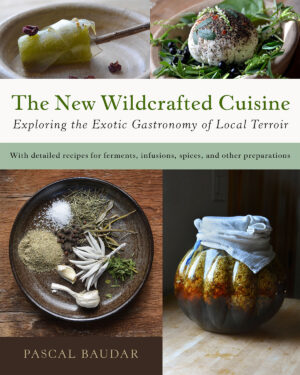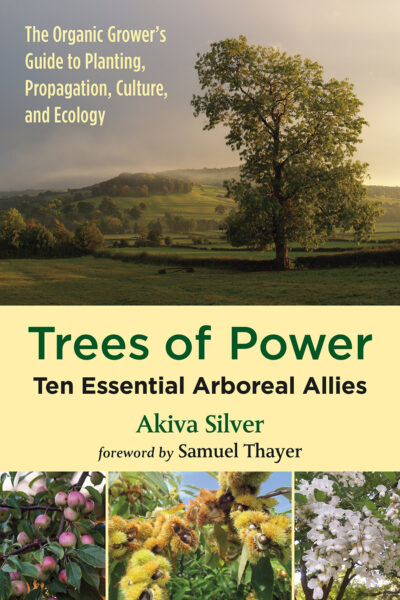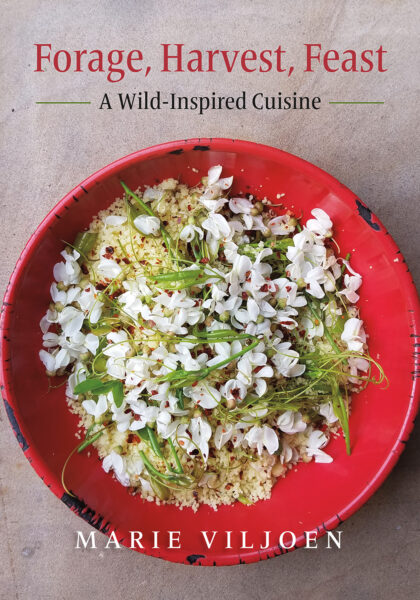Crunchy Candied Tree Leaves: A Natural Fall Dessert Topper
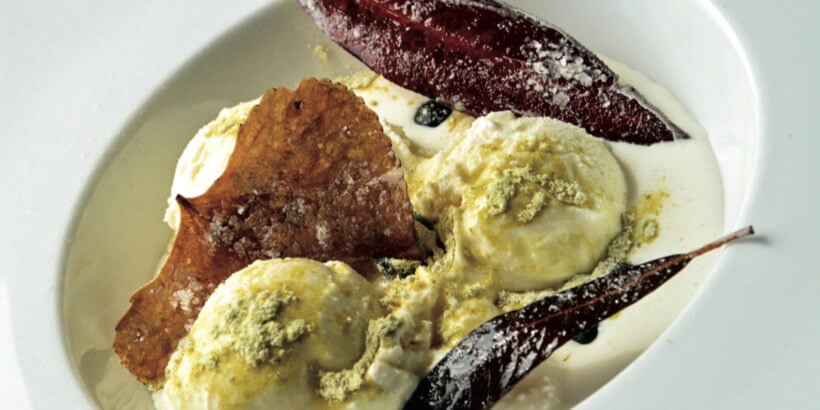
Instead of raking and throwing away fallen leaves this autumn, what if we repurposed them and turned them into something beautiful & delicious? Embrace the natural flavors of fall with this recipe for candied tree leaves.
The following recipe is from The New Wildcrafted Cuisine by Pascal Baudar. It has been adapted for the web.
RECIPE: Crunchy Candied Tree Leaves
I always wanted to do something with tree leaves, but very often they’re not palatable—they’re either too bitter or too tough to eat. With this method you can turn many types of non-poisonous tree leaves into crunchy, sugary, and tasty dessert decorations.
You must think ahead, though: This procedure takes 5 days from start to finish.
Ingredients
- A few non-toxic tree leaves (willow, cottonwood, and others)
- Water
- 1⁄2 teaspoon (3 g) salt
- 1 and 3⁄4 cups (350 g) sugar
- Flavoring ingredients: lemon slices, a couple of fresh ginger chunks, wild aromatic herbs
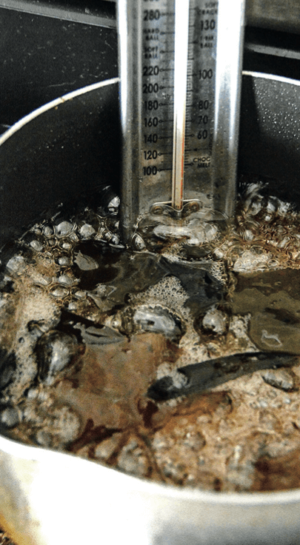 Procedure
Procedure
- Wash the leaves and place them in a pot with the water. Add the salt and bring to a boil. Reduce the heat and simmer the leaves for 15 minutes. Change the water and repeat the procedure for another 15 minutes. This will remove most of the bitter taste in the leaves.
- Drain the leaves. Add 3 cups (750 ml) water and the sugar to the pot. Heat the syrup solution to a boil, add the leaves, and bring to a light simmer. Cook for 20 minutes. Remove from the heat and let stand overnight.
- Day 2: Bring the leaves and syrup to a boil. Turn the heat down and simmer lightly for 20 minutes. Remove from the heat and let stand overnight.
- Day 3: Bring the leaves and syrup to a boil again. Turn the heat down and simmer lightly for 20 minutes. Remove from the heat and let stand overnight.
- Day 4: This is the time to add ingredients such as lemon slices, ginger, and wild aromatic herbs to flavor the leaves. I usually add 3 to 4 lemon slices, a couple of ginger chunks, and a couple of white sage leaves to the syrup and then repeat the previous instructions: Bring the concoction to a boil, then simmer lightly for 20 minutes. Remove from the heat and let stand overnight.
- Day5: Preheat the oven to 340°F (171°C). Bring the leaves and syrup to a simmer and cook until the temperature reads 240°F (115°C).
- Using a fork or spoon, carefully remove the leaves from the syrup, placing the leaves on a plate. Using a rubber spatula, remove excess syrup from the leaves and lay them carefully on a piece of parchment paper or a silicone baking pad.
- Bake the leaves for 2 to 3 minutes, then remove them from the oven and place them on a fresh sheet of parchment paper. Let dry for 30 minutes. I usually use them the same day, but they should keep for days in dry conditions. Humidity will make them softer (not a good thing).
Recommended Reads
Seasonal Desserts: Apple Spice Bundt Cake & Pumpkin Pie with Hazelnut Crust
Recent Articles
Chances are, you’ve seen cattails growing on the edge of your local lake or stream at least once or twice. Instead of just passing these plants, try foraging for and cooking them to create delicious seasonal dishes! The following excerpt is from The New Wildcrafted Cuisine by Pascal Baudar. It has been adapted for the…
Read MoreGarlic mustard: while known as “invasive,” this plant can be consumed in its entirety and has great nutritional value. Plus, the garlic-flavor is a perfect addition to any recipe that calls for mustard! The following are excerpts from Beyond the War on Invasive Species by Tao Orion and The Wild Wisdom of Weeds by Katrina…
Read MoreOh, honeysuckle…how we love thee. If only there was a way to capture the sweet essence of this plant so we could enjoy it more than just in passing. Luckily, foraging and some preparation can help make that happen! Here’s a springtime recipe that tastes exactly like honeysuckle smells. The following excerpt is from Forage,…
Read MoreIntroducing…your new favorite brunch dish! This whole broccoli frittata is packed with fresh, wildcrafted flavors that are bound to help you start your day off on the right foot. The following is an excerpt from The Forager Chef’s Book of Flora by Alan Bergo. It has been adapted for the web. RECIPE: Whole Broccoli Frittata…
Read MoreWondering where to forage for greens this spring? Look no further than hedges, which serve as natural havens for wild greens and herbs! The following is an excerpt from Hedgelands by Christopher Hart. It has been adapted for the web. Food from Hedges: Salads and Greens Let’s start by looking at all the wild foods…
Read More

